#Josef Hoffmann Museum
Explore tagged Tumblr posts
Text

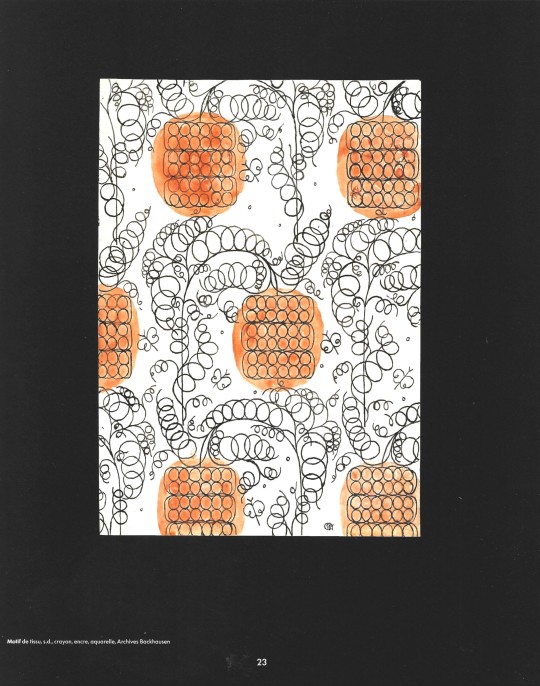
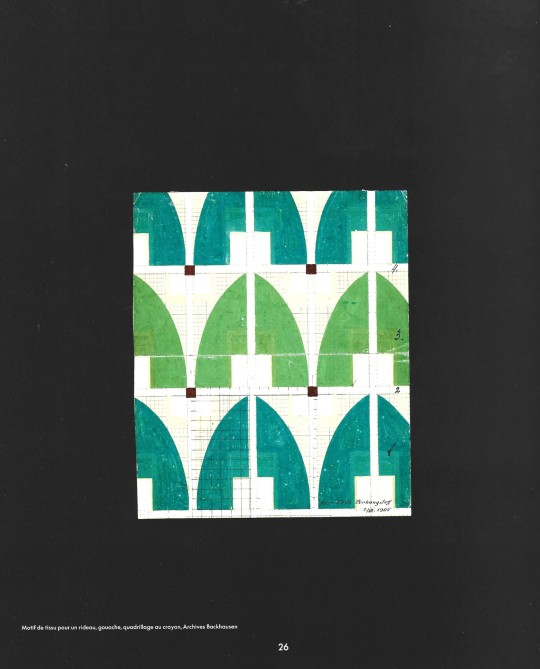
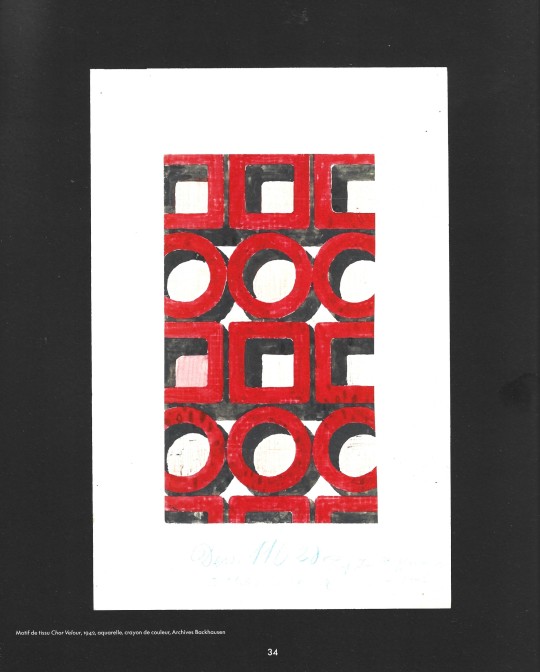
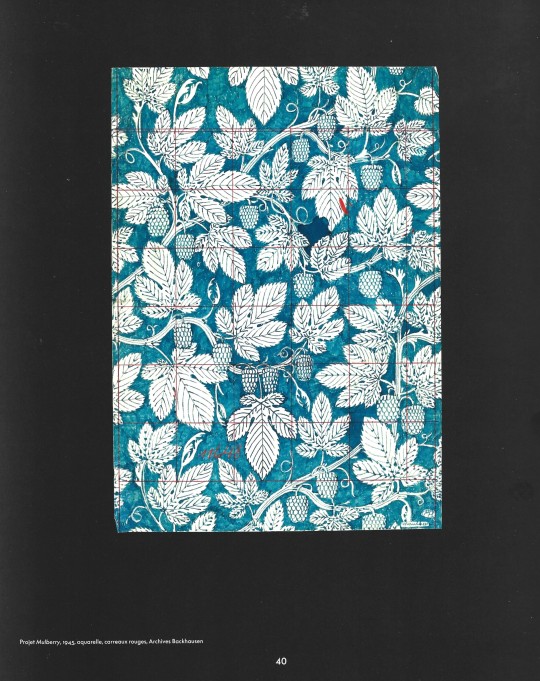




Josef Hoffmann
Sous le charme de la beauté
Adrián Prieto, Christian Witt-Dörring
Hannibal, Veurne 2023, 208 pages, Hardcover,24,5x28cm, French Edition, ISBN 978 94 6466 668 7
euro 60,00
email if you want to buy [email protected]
Innovative introduction to the iconic work of architect and designer Josef Hoffmann
The Viennese architect and 'all-round designer' Josef Hoffmann (1870–1956) is so much more than the founder of the Wiener Werkstätte. This book offers a broad view of his oeuvre that developed over no less than sixty years. The timeless beauty of Hoffmann's creations shows not only his importance as a historical figure, but also as a source of inspiration for several generations.
Richly illustrated with furniture, objects, designs, textiles, photographs, drawings and documents. Special attention is paid to his creative working method and his misunderstood use of color.
This monograph is published on the occasion of the exhibition Josef Hoffmann – Under the spell of beauty, which will take place from October 6, 2023 to April 14, 2024 in the Brussels Museum of Art & History. The project was created in collaboration with the Museum für angewandte Kunst (MAK) in Vienna and is one of the eye-catchers of the Art Nouveau Year 2023 in Brussels.
13/11/23
#Josef Hoffmann#architect and designer#Brussels Museum of Art 2024#viennese architect#Wiener Werkstatte#furnitures#textiles#objects#drawings#designbooksmilano#fashionbooksmilano
23 notes
·
View notes
Text

Youth Playing the Pipes of Pan
Artist: Bertold Löffler (Austrian, 1874–1960)
Date: 1912
Medium: Oil on canvas
Collection: Metropolitan Museum of Art, New York City, NY, United States
Description
This, Löffler’s most important painting, reveals his passion for classicism, from the garlanded youth and draped female attendants to the vase at their feet, depicting Pan, the Greek god of untamed nature. The bold patterns on the women’s cloaks reflect Löffler’s work as a designer for the cutting-edge Austrian artists’ association the Wiener Werkstätte. Eduard Ast, a major patron of the group, acquired this canvas for his villa in Vienna, built by the visionary architect Josef Hoffmann.
#painting#oil on canvas#classicism#pan#greek god of untamed nature#nature#artwork#women#music#flute#bertold loffer#austrian painter#fine art#european art#20th century painting#the met#male#tree#austrian art
47 notes
·
View notes
Photo

Josef Hoffmann (1870-1956) - Fluted Vase 1922 -Meyr’s Neffe Glassworks, Manufacturer W. Werkstatte - Corning Museum of Glass. - source Mary Tampakopoulou.
46 notes
·
View notes
Text

Expo Josef Hoffmann Royal Museums of Art and History Bruxelles, Josef Hoffmann
Fauteuil à dossier inclinable, Vers 1908
Hêtre courbé, contreplaqué perforé, vernis façon acajou, laiton

French Art Nouveau
0 notes
Text
Stoclet Palace

Today, we're embarking on a virtual journey to one of Brussels' most captivating hidden gems, the Stoclet Palace. This architectural marvel, tucked away in a quiet residential neighborhood, holds the prestigious status of being a UNESCO World Heritage Site and is a shining example of the Art Nouveau movement.
The Stoclet Palace is a true masterpiece of Art Nouveau architecture. Designed by the renowned architect Josef Hoffmann and completed in 1911, it represents the pinnacle of the Art Nouveau style. Every inch of this palace, from its façade to its interiors, is a testament to the era's obsession with organic forms, intricate detailing, and avant-garde design.
In 2009, the Stoclet Palace was designated as a UNESCO World Heritage Site, recognizing its outstanding universal value. It's one of only a few private houses in the world to hold this prestigious distinction, and visiting it is like stepping into a time capsule of turn-of-the-century opulence.
The Stoclet Palace is not just an architectural marvel; it's a Gesamtkunstwerk, or "total work of art." Every element of the design, from the architecture and interiors to the furniture and artworks, was meticulously crafted to create a harmonious and immersive experience.
As you explore the palace, keep an eye out for iconic Art Nouveau motifs, such as sinuous lines, floral patterns, and geometric shapes. The famous "Tree of Life" mosaic in the dining room is a prime example of the movement's emphasis on natural forms.
Perhaps the most famous feature of the Stoclet Palace is the exquisite dining room adorned with frescoes by the Austrian symbolist painter Gustav Klimt. His "Expectation" and "Fulfillment" are breathtaking works of art that elevate the palace to a level of unparalleled beauty.
The palace is still privately owned and inhabited by the Stoclet family, making it a unique and exclusive destination. While it's not open to the public, the exterior alone is worth admiring, and its inclusion on the UNESCO World Heritage List highlights its significance in the world of art and architecture.
Beyond the Stoclet Palace, Brussels is a treasure trove of Art Nouveau architecture. Take a stroll through the city's streets to discover more examples of this captivating style, including the famous Horta Museum.
In conclusion, the Stoclet Palace is a hidden architectural gem that showcases the splendor of the Art Nouveau movement. Its UNESCO World Heritage status acknowledges its enduring importance in the world of art and design. While a visit inside may not be possible, the exterior alone is a testament to the enduring beauty of this masterpiece. So, if you're ever in Brussels, be sure to pay homage to this Art Nouveau icon and explore the city's rich architectural heritage. 🏛️🎨🌿
0 notes
Photo


Josef Hoffmann, Tea set, 1903
174 notes
·
View notes
Photo

Josef HOFFMANN “Entwurf für verschiedene Möbel” / “Design for Various Pieces of Furniture” - späte 30er oder 40er Jahre - late 30s or 40s - on view at the MUMOK Vienna.
#josef hoffmann#draft#furniture#vienna 1900#wien 1900#wiener werkstätte#jugendstil#mumok#museum of modern art#vienna#wien#fin de siècle
4 notes
·
View notes
Text
Dagobert Peche
At Commune, each of us has a shared title: designer. We gather ourselves from many different backgrounds, though we’re here to create together. This means we often find ourselves facing unfamiliar avenues… and down them we charge. It’s not a surprise then, that we tend to be immensely inspired by those whose creative endeavors embrace more than one concentration. Dagobert Peche is one of these people.
Born in Vienna at the end of the 19th century, he came of age during a particularly experimental time and place. It was the foundational period of the Wiener Werkstatte; Peche was working alongside two of its giants: Wagner & Hoffmann. Though he practiced as an architect initially, Peche eventually began to produce decorative arts. His creative world seemed to explode from there. Metals, ceramics, textiles, furniture, and paintings all exuded from his creative force, and were crafted with a remarkable adherence to the technicalities of his architectural training.
We’re slightly obsessed with all that he produced and are sharing images here that we’ve collected from two sources: “Dagobert Peche und die Wiener Werkstatte” by Peter Noever and the always incredible Metropolitan Museum Archive.
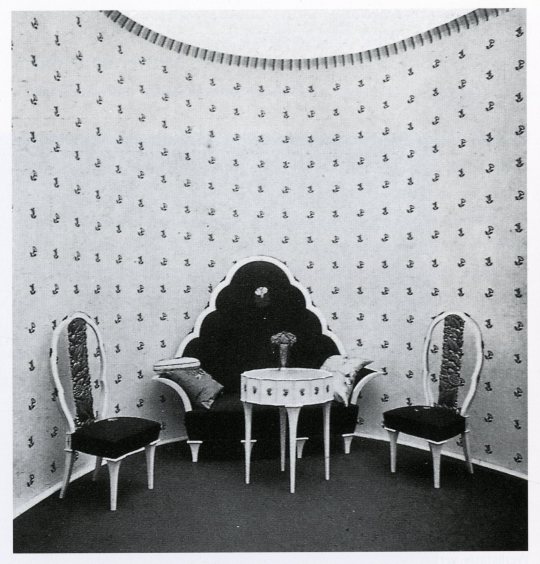
Image courtesy of Peter Noever, Dagobert Peche und die Wiener Werkstatte, Hatje, 1998.
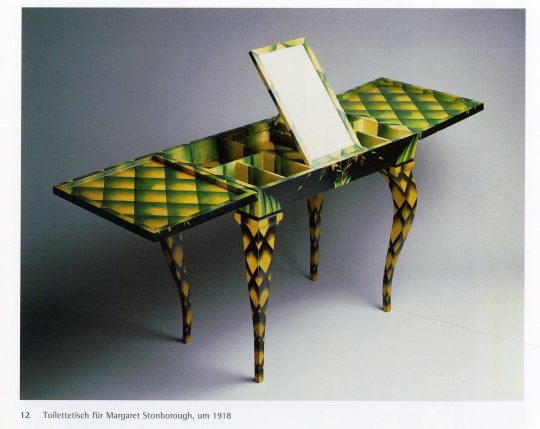
Image courtesy of Peter Noever, Dagobert Peche und die Wiener Werkstatte, Hatje, 1998.

Image courtesy of Peter Noever, Dagobert Peche und die Wiener Werkstatte, Hatje, 1998.
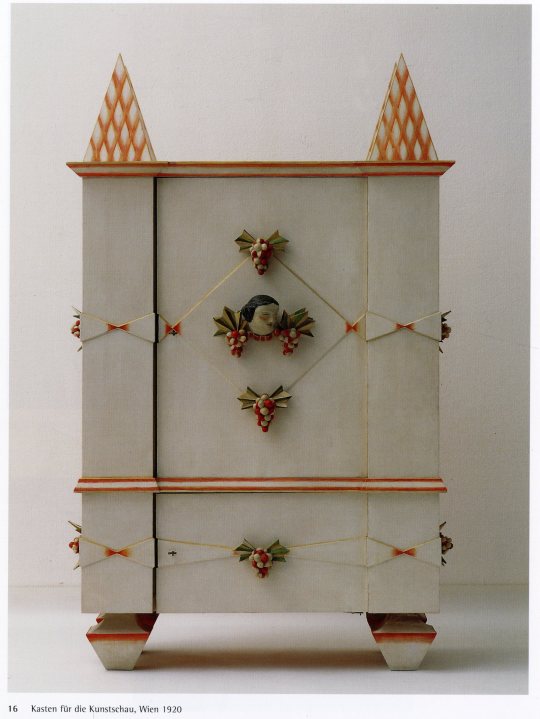
Image courtesy of Peter Noever, Dagobert Peche und die Wiener Werkstatte, Hatje, 1998.

Image courtesy of Peter Noever, Dagobert Peche und die Wiener Werkstatte, Hatje, 1998.

Image courtesy of Peter Noever, Dagobert Peche und die Wiener Werkstatte, Hatje, 1998.
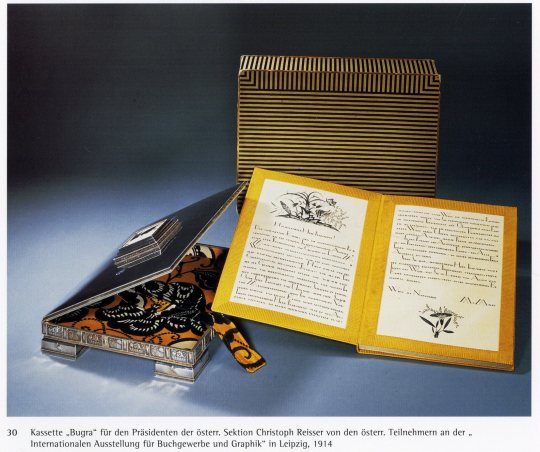
Image courtesy of Peter Noever, Dagobert Peche und die Wiener Werkstatte, Hatje, 1998.

Image courtesy of Peter Noever, Dagobert Peche und die Wiener Werkstatte, Hatje, 1998.

Image courtesy of Peter Noever, Dagobert Peche und die Wiener Werkstatte, Hatje, 1998.

Image courtesy of Peter Noever, Dagobert Peche und die Wiener Werkstatte, Hatje, 1998.

Image courtesy of Peter Noever, Dagobert Peche und die Wiener Werkstatte, Hatje, 1998.
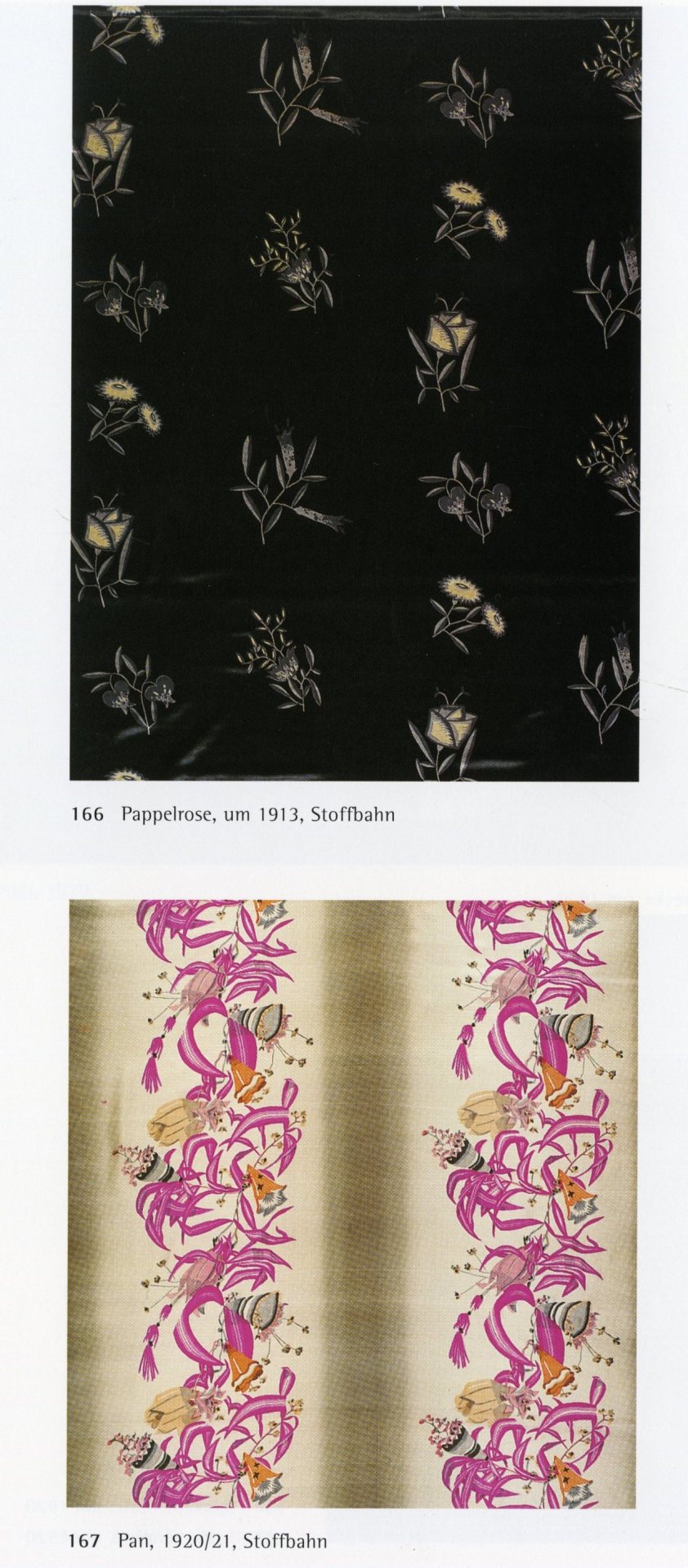
Image courtesy of Peter Noever, Dagobert Peche und die Wiener Werkstatte, Hatje, 1998.

Image courtesy of Peter Noever, Dagobert Peche und die Wiener Werkstatte, Hatje, 1998.
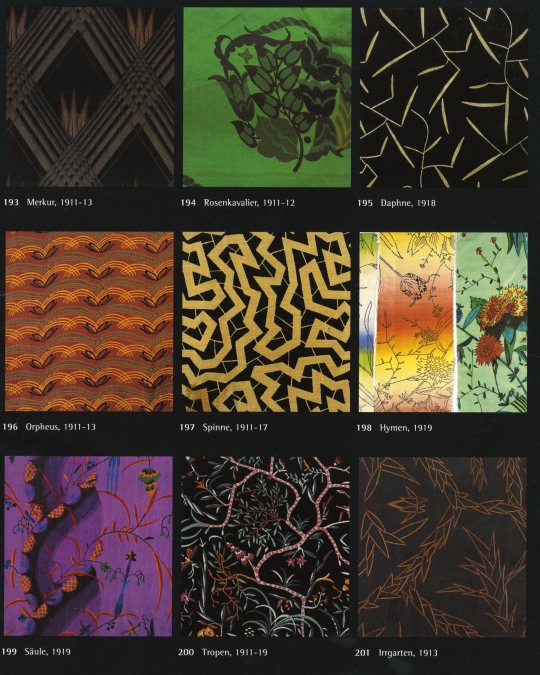
Image courtesy of Peter Noever, Dagobert Peche und die Wiener Werkstatte, Hatje, 1998.

Image courtesy of Peter Noever, Dagobert Peche und die Wiener Werkstatte, Hatje, 1998.

Image courtesy of Peter Noever, Dagobert Peche und die Wiener Werkstatte, Hatje, 1998.
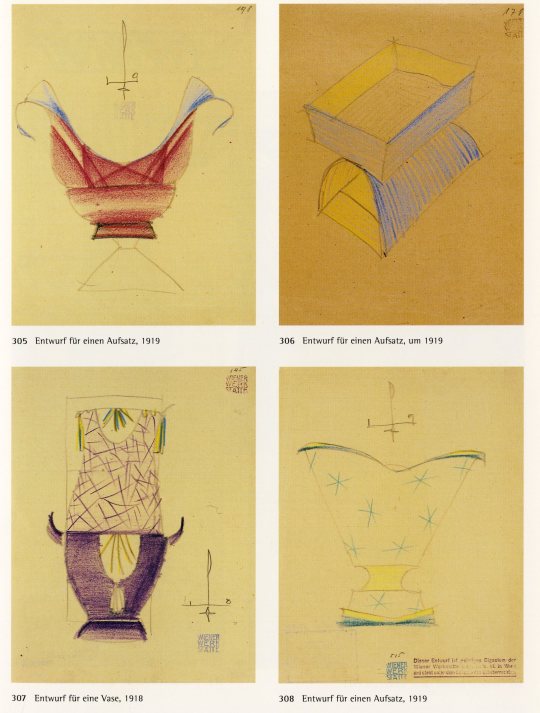
Image courtesy of Peter Noever, Dagobert Peche und die Wiener Werkstatte, Hatje, 1998.
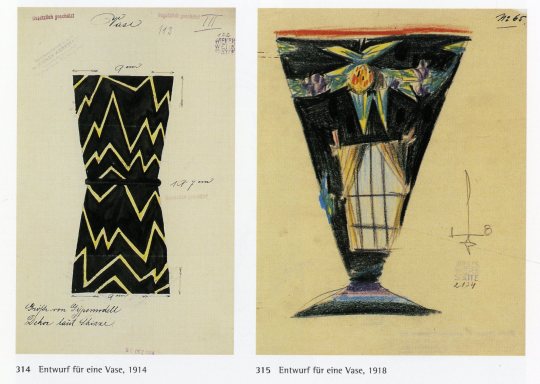
Image courtesy of Peter Noever, Dagobert Peche und die Wiener Werkstatte, Hatje, 1998.
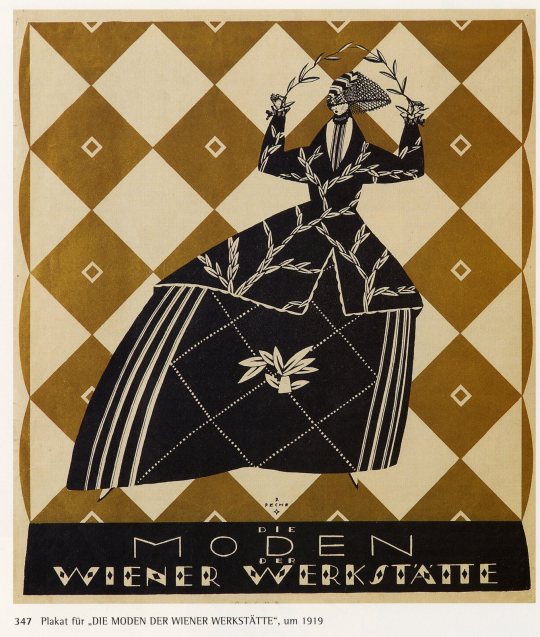
Image courtesy of Peter Noever, Dagobert Peche und die Wiener Werkstatte, Hatje, 1998.

Dagobert Peche, Daphnis, 1922, Metropolitan Museum Archive

Dagobert Peche, Feather Duster, 1922, Metropolitan Museum Archive

Dagobert Peche, Nuance, 1922, Metropolitan Museum Archive
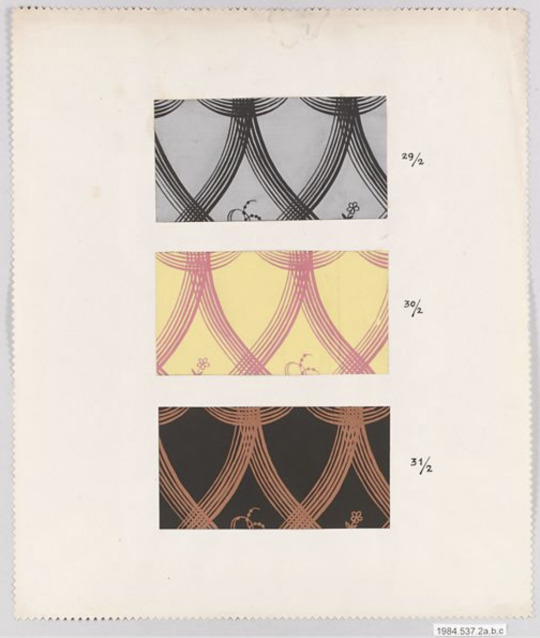
Dagobert Peche, Palatin, 1922, Metropolitan Museum Archive

Dagobert Peche, Palatin, 1922, Metropolitan Museum Archive
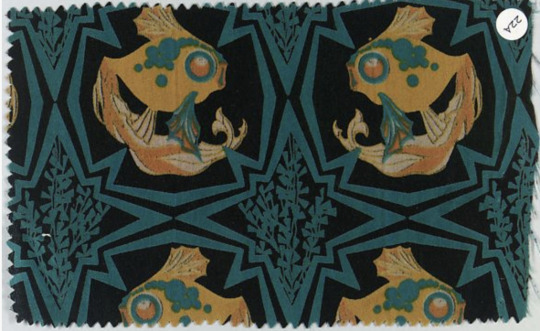
Dagobert Peche, Textile Sample circa 1902, Metropolitan Museum Archive
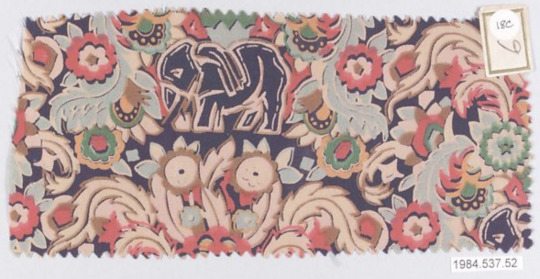
Dagobert Peche, Textile Sample circa 1920, Metropolitan Museum Archive

Dagobert Peche, The Rose (Die Rose), 1922, Metropolitan Museum Archive
#communedesign#communedaily#dagobertpeche#wiener werkstätte#designer#architect#decorativearts#vienna#19thcentury#otto wagner#josef hoffmann#peter noever#metropolitan museum of art
39 notes
·
View notes
Photo

Exhibition Poster for Koloman Moser - Univeralkünstler zwischen Klimt und Josef Hoffmann at the Museum for Applied Arts Vienna, 2019.
#koloman moser#poster#art exhibition#exhibition poster#graphic#design#art#artist#artwork#mak#mak vienna#vienna#museum#josef hoffmann#gustav klimt#interior#photography#geometric#klimt#juliaknz
85 notes
·
View notes
Text
15 Jahre Josef Hoffmann Museum: Brtnice (CZ) bis 30.10.2022
15 Jahre Josef Hoffmann Museum: Brtnice (CZ) bis 30.10.2022
Seit 2006 führen das MAK und die Mährische Galerie in Brno das Geburtshaus Josef Hoffmanns in Brtnice, Tschechien, als gemeinsame Außenstelle. Der Pionier der Wiener Moderne blieb seinem Elternhaus, das ihm zeit seines Lebens als Inspirationsquelle diente, stets verbunden. Die Ausstellung 15 JAHRE JOSEF HOFFMANN MUSEUM lässt die Neunutzung seines Geburtshauses und die Ausstellungen der…

View On WordPress
#Architektur#Artists-in-Residence-Programm#Brtnice#DER BAROCKE HOFFMANN#Design#Designdenken#Fortschritt durch Schönheit#Geburtshaus#Gestaltung#Handschrift#Interior#Josef Hoffmann Museum#klassische Moderne#Kulturerbe#MAK#Restaurierung#Sammlung#Vereinigung bildender Künstler Österreichs Secession#Vermittlungsprogramm
1 note
·
View note
Photo
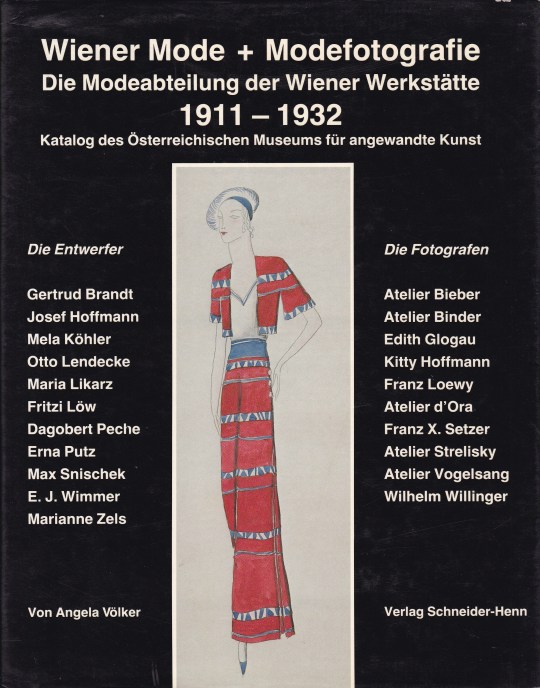
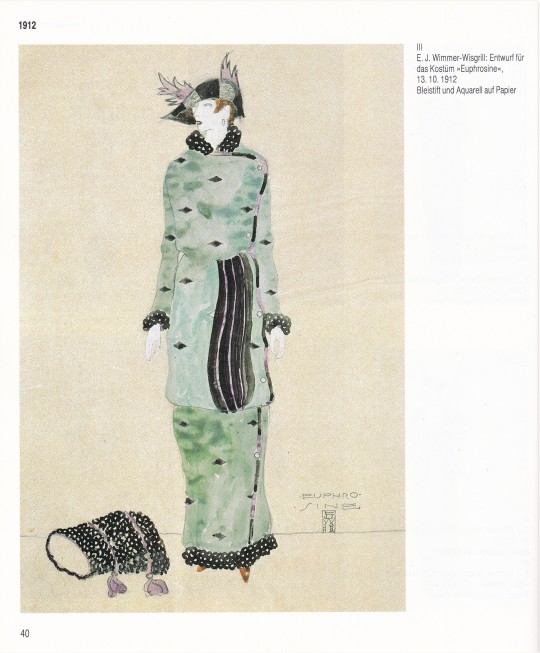
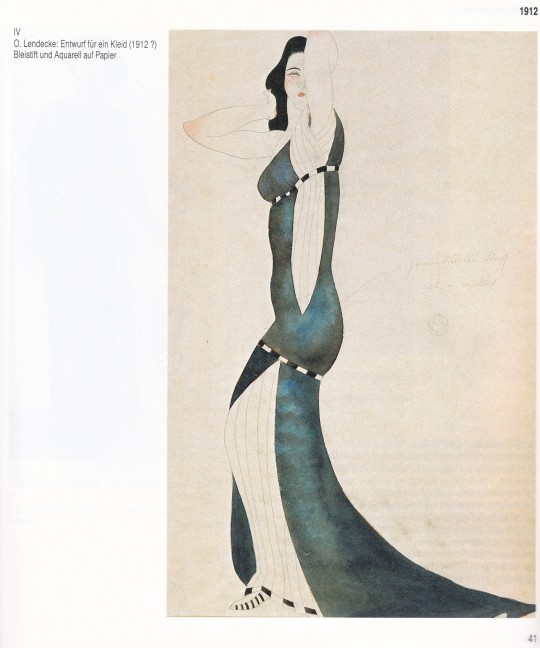
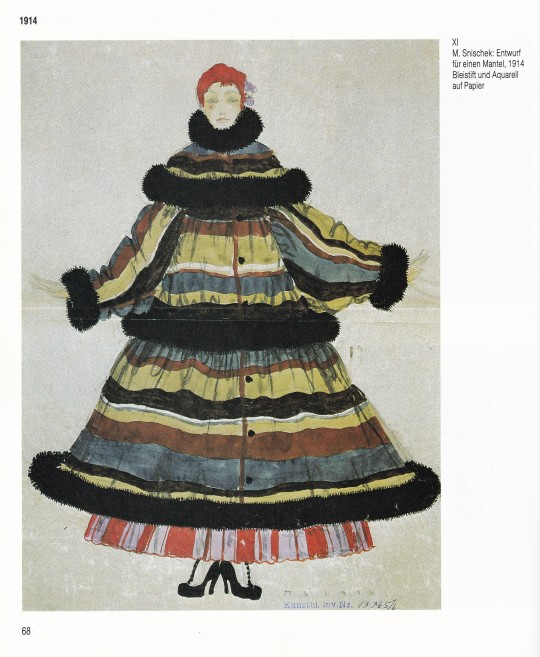

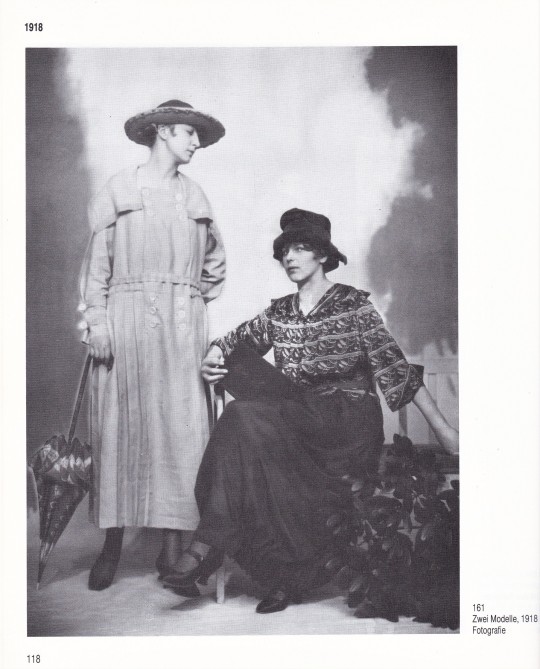

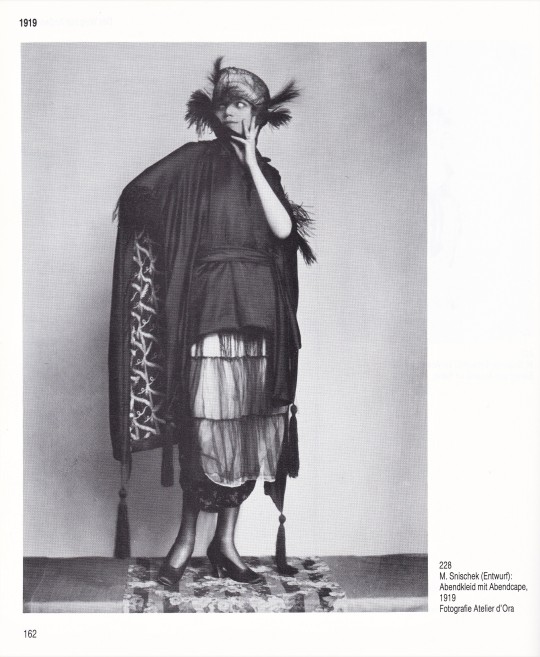
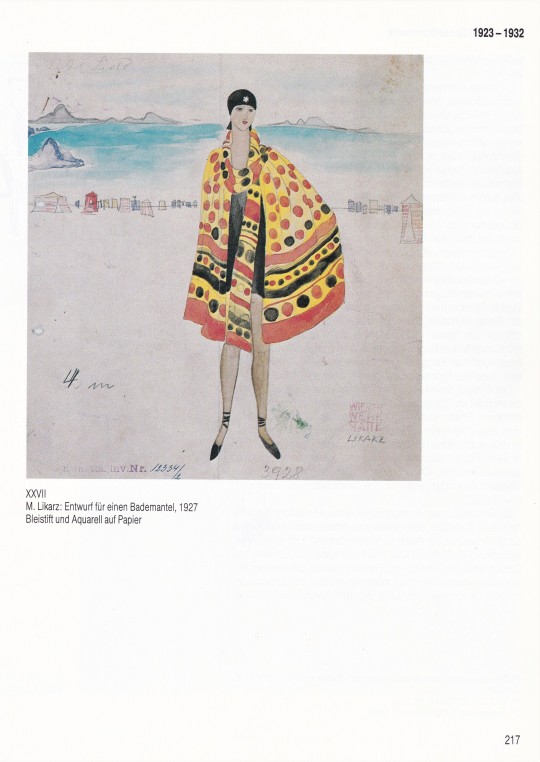

Wiener Mode + Modefotografie
Die modeabteilung der Wiener Werkstätte 1911-1932
Katalog des Österreichischen Museums für angewandte Kunst
Angela Völker
Verlag Schneider-Henn, München - Paris 1984, 283 Seiten mit 393 Abb., davon 33 in Farbe , ISBN 978-3923239108
euro 45,00
email if you want to buy [email protected]
Vienna Fashion + Fashion Photography. The fashion department of the Vienna Workshop 1911-1932. Catalogue of the Austrian Museum of Applied Arts
22/04/20
orders to: [email protected]
ordini a: [email protected]
twitter:@fashionbooksmi
instagram: fashionbooksmilano, designbooksmilano tumblr: fashionbooksmilano, designbooksmilano
#Wiener Mode#Modefotografie#moda Vienna#fashion photography#Franz Loewy#Atelier d'Ora#Josef Hoffmann#Dagobert Peche#fashion history#fashion inspirations#fashion books#Applied Arts Museum Fashion Collection#fashionbooksmilano
16 notes
·
View notes
Text

As both maker and muse, avant-garde fashion designer Emilie Flöge’s influence weaves through the history of Vienna and contributes to its allure as a cultural destination today. Born in 1874, Flöge advanced from seamstress to boutique owner at a time of rapid societal change. As she inspired—and was featured within—masterworks by the acclaimed Austrian painter Gustav Klimt, she also pioneered liberation for women through corset-free clothing with flowing silhouettes and ornate decorative motifs.
The fact that Flöge is better known for her collaborative relationship with Klimt neglects her exquisite craft and independent entrepreneurial success in Vienna during the fin-de-siècle. Flöge’s style was part of an international discourse that included French couturiers Paul Poiret, who removed bodices from his creations in 1906, and Coco Chanel, who introduced comfortable but elegant two-piece women’s suits. Though Poiret’s developments were primarily aesthetic, Flöge’s and Chanel’s were ideological and fanned attention to a sense of rebellion.

Flöge, with sisters Pauline and Helene, opened the salon Schwestern Flöge (which translates to “Flöge Sisters”) in 1906, four years before the first Chanel boutique opened in Paris. Being owned and operated by three women was an uncommon undertaking at the time, but its lively location on Mariahilfer Straße welcomed bourgeois women who became regular patrons. It was here that Flöge contributed to the expanding “rational dress movement” of reformed shapes, also known as the “Reformkleid,” where generous cuts with wide sleeves draped playfully over the wearer. Flöge embellished these dresses with patterns that drew inspiration from Eastern European embroidery, which imparted the smoke-like garments with a glamorous Viennese-bohemian spirit. This was radical, unrestricted fashion.
Schwestern Flöge was a predecessor to what we today refer to as a concept shop. Designed by architect Josef Hoffmann (who also imagined Klimt’s studio), it was uniquely furnished with geometric wooden chairs, checkered tables, carpets, and adjustable mirrors. It was also peppered with objets d’art and luxury items, crafted from tortoiseshell and lapis lazuli, that couldn’t be purchased. With the store’s detailed logo, which paired art nouveau text with a checkered border, a fully-formed brand captured the attention of Vienna’s high society.
Flöge’s role as creative head required everything from broad, trend-setting decisions to hands-on production work with clients. The studio expanded to 80 seamstresses at its height, and operated for 30 years. Both feats were a testament to Flöge’s acumen, as was her success beyond Vienna with a curious international market. At home, Schwestern Flöge became the leading fashion destination of its Viennese society—and this innovative venture paved the way for shopping in contemporary Vienna.
Today, concept shops and boutiques abound, from the hybrid fashion, art, and design store SONG, to Park, which highlights established and emerging Austrian designers. While Mariahilfer Straße is still a celebrated destination (especially with locals), Margaretenstraße plays host to the exhilarating boutiques Samstag, Unikatessen, Wolfensson, and more. Walking through the historic city center, as well as the Goldenes Quartier, provides ample access to items beyond clothing and accessories, too.
As fashion is ingrained in Vienna, so too is art. This is due in part to Klimt’s legacy, and his work appears in museums throughout Vienna—especially at the Schloss Belvedere, an acclaimed institution with a detailed Austrian art collection that also includes pieces by Egon Schiele and Koloman Moser.
In his time, Klimt purchased fashionable items from Flöge, but that isn’t how they knew one another. Their lives were intertwined long beforehand, with their first known correspondence taking place in 1895. Though it has been presumed they were in love, both were discreet about anything beyond friendship, which has been observed through nearly 400 written documents that they exchanged.
“Her intricate fashion was very much sought after and, much like Klimt’s paintings, a must-have among the fashionable and artistically minded.”
Sandra Tetter, director Gustav-Klimt-Centre on Lake Attersee
It’s her role in his art that has led to further assumption—from the “Portrait of Emilie Flöge,” where Klimt depicts her with shimmering splendor, to “The Kiss,” which is arguably his most famous work (and on display at Schloss Belvedere). In the former, Klimt displays the revolutionary golden style that will define him. With the latter, a couple—arguably Flöge and Klimt—passionately embrace, adorned with mesmeric attire that resembles her fashion.

In addition to painting Flöge, Klimt worked in collaboration with her. Together, they explored color and form, and she even produced designs that he made. In these, they were photographed together around Lake Attersee, a pristine destination (then and today) with exquisite panoramas. They regularly summered together in various villas along the lake, which today can be toured through the Klimt Artist Trail, organized by Sandra Tetter, director Gustav Klimt Center on Lake Attersee art center, which transports visitors to the artist’s time at the site where he created over 40 landscape paintings.
When Klimt died in 1918, part of his estate went to Flöge, and his purported last words were, “Get Emilie.” Klimt imbued Vienna with a golden luster that mirrors his own artistic achievements. For this, he has become a ubiquitous figure in the arts world, whereas Flöge has fallen into relative obscurity. Her legacy does live on, however, from an honorary grave in the Wien-Simmering cemetery to the global revival of attribution occurring today. Even Maria Grazia Chiuri and Pierpaolo Piccioli referenced Flöge’s “Reformkleid,” through liberated shapes and opulent patterns, with their Fall/Winter 2015 collection for Valentino.
A dazzling contemporary cultural attraction for its art history, grand café culture, extravagant ball season, and sheer natural beauty, Austria’s charm parallels that of Flöge’s—and to think of visiting Vienna or Lake Attersee means looking to her future-forward values and what they mean today.
#Emilie floge#Emilie Flöge#gustav klimt#art#art history#women in history#women in art#vogue#fashion#fashion designers
8 notes
·
View notes
Photo

"Sets d'Ustensiles" de Josef Hoffmann (1905) dans les collections du Museum für Kunst & Gewerbe Hamburg, décembre 2022.
2 notes
·
View notes
Photo


pretty papers and a lamp Nov 18, 2017
#nyc#daytrips#neue galerie#art#museums#josef hoffmann#blueberries#pendant lamp#koloman moser#birds#pretty things
1 note
·
View note
Photo

In the best Viennese tradition Oswald Haerdtl (1899-1959) was more than an architect but a total designer, a Gesamtkünstler, whose postwar interiors epitomize the carefree spirit of the time. Haerdtl was trained at Vienna’s Kunstgewerbeschule by Oskar Strnad and Josef Frank, two protagonists of Austrian architecture who instilled a clear sense of modernism in the young architect. In 1924 he joined Josef Hoffmann’s atelier and became his long-term associate but never an epigone of the master. One of the most striking talents of Oswald Haerdtl was his ability to translate his design ideas, no matter if architecture, furniture, lettering or fixtures, into beautiful drawings on squared paper that also make up a good part of the present book: „Oswald Haerdtl - Architekt und Designer (1899-1959)“, edited by Adolph Stiller and published by Verlag Anton Pustet in 2000, is a comprehensive monograph and work catalogue that offers multifocal perspectives on his short but fruitful career. Friedrich Achleitner provides a very vivid account of Haerdtl’s role in Vienna’s architecture scene and the authority he undoubtedly was, also qua the important commissions he received, e.g. the postwar reconstruction of the Vienna Chancellery or the Wien Museum. Bruno Reichlin in turn elucidates his role as architect and designer of countless interiors, especially those of cafés and Espresso bars, designs that often only in retrospect received their due appreciation as ingenious representations of their times. Haerdtl’s architecture, as Siegfried Mattl points out, is one of subtle differences, of serene nobility, characteristics perfectly embodied by his Austrian pavilion at the 1937 world fair in Paris, a transparent rectangle so much more subtle than the brutally pompous pavilions of the USSR or Germany.
„Oswald Haerdtl - Architekt und Designer“ is a fabulous, in-depth monograph on an often overlooked but undoubtedly important architect both in interwar and postwar Austria who with the present book received a long overdue appreciation.
28 notes
·
View notes
Photo

Fruit Basket, Josef Hoffmann, Austrian, 1870–1956, 1905, Saint Louis Art Museum: Decorative Arts and Design
https://www.slam.org/collection/objects/29916/
5 notes
·
View notes